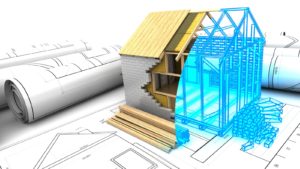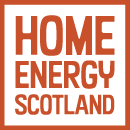Home >
What to consider when designing your self-build

What to consider when designing your self-build
Planning a self-build home? This article is the first in our green self-build guide – a weekly series of articles aimed at self-builders who want to go green and save.
If planning a self-build, you’ll want to ensure that it’s comfortable all year round, while at the same time having a low energy demand and minimal carbon emissions.
There are two main components that determine this: the fabric of the building and renewable technology.
Fabric first
Many designers use a ‘fabric first’ approach. This means maximising the thermal performance of materials that make up the building – your roof, walls, floors, doors and windows. It also means paying attention to ways that heat can escape – through draughts and cold bridging, for example.
Some building types, known as Passivhaus, make the most of natural energy sources such as sunlight and airflow. This means there’s very little energy demand for ventilation, heating and cooling.
Renewables and other considerations
The other component to consider is whether to install renewables – solar panels or a heat pump, for example – to meet the remaining energy demand of your home. You can find out more about this below.
It’s important to consider post-build, too. The materials, design and any renewable energy that you incorporate will need to fit with your lifestyle. Think carefully about the maintenance needed for the materials you use and ensure these costs and the time required is reflected in your plans.
You’ll also need to consider day-to-day living. By incorporating energy monitors and in-home displays into your design, you can see how much energy you’re using at any given time and the impact that adjusting your usage has on your energy consumption.
So why is all this important? Because you’ll need your new home to meet the Scottish Building Standards.
Going for gold
There are seven sections in the Scottish Building Standards. Six are mandatory (structure, fire, environment, safety, noise, energy) while one (sustainability) is voluntary. Sustainability includes elements from some of the mandatory sections – environment (ventilation), noise and energy.
Sustainability awards across four levels: bronze, silver, gold and platinum. For example, if you build to the six mandatory standards, you’ll achieve a bronze standard home.
To achieve a higher award, your design needs to meet voluntary standards in sustainability. This section has eight aspects including carbon emissions and heating efficiency. Your design will need to demonstrate compliance across all aspects to achieve a higher award.
Five of the eight aspects relate to renewable technology, either directly or indirectly. So, if you’re aiming for a silver award or higher, you’ll need to include them in your design. This means that by incorporating renewables, you can reduce carbon emissions and achieve a higher energy efficiency standard and the resulting SAP score.
Ultimately, the higher the award of your home, the lower its carbon emissions will be. This could also increase its appeal should you decide to resell it.

What’s SAP, and why is it important?
The Standard Assessment Procedure, also known as SAP, is the methodology used to define the energy efficiency of a property. The SAP software, used to produce an Energy Performance Certificate (EPC), defines how the building materials and construction, as well as renewable technologies, relate to your home’s energy performance.
When your architect designs your home in the SAP software it makes a comparator (Target Emission Rate – TER). Your architect needs to virtually construct a home where the Dwelling Emission Rate (DER) is lower than the TER. The bigger the difference, the higher up the sustainability award rating your home will go – providing its design complies with all other sustainability aspects.
Why installing renewables can help your SAP score
The SAP score measures the cost of fuel to meet the property’s energy demands. The higher the score, the less cost is required to meet its energy demand.
Installing renewable energy systems could meet some, or even all, of the home’s energy demand. This could reduce your need to use non-renewable sources such as gas or oil and it can save you money on energy bills as you rely less on importing electricity from the grid. Fuel required to power renewables is often cheaper than the alternatives.
Adding renewables on their own, without meeting other requirements of the sustainability section, achieves ‘active’ status in the building standards and can help ensure that your home’s DER is lower than the TER.
It can be difficult to achieve a satisfactory DER without installing some type of renewable system and this will only become more challenging as building standards change in the future.
Next time, we’ll explore how to choose the right renewable heating system for your self-build home.
Want to know more?
Watch our webinars on eco-homes and Passivhaus homes and self-builds for more information on what to consider when building your green home.
Find out more and request a call back from one of our specialist renewables advisors for free, expert advice.
More in our green self-build guide:



